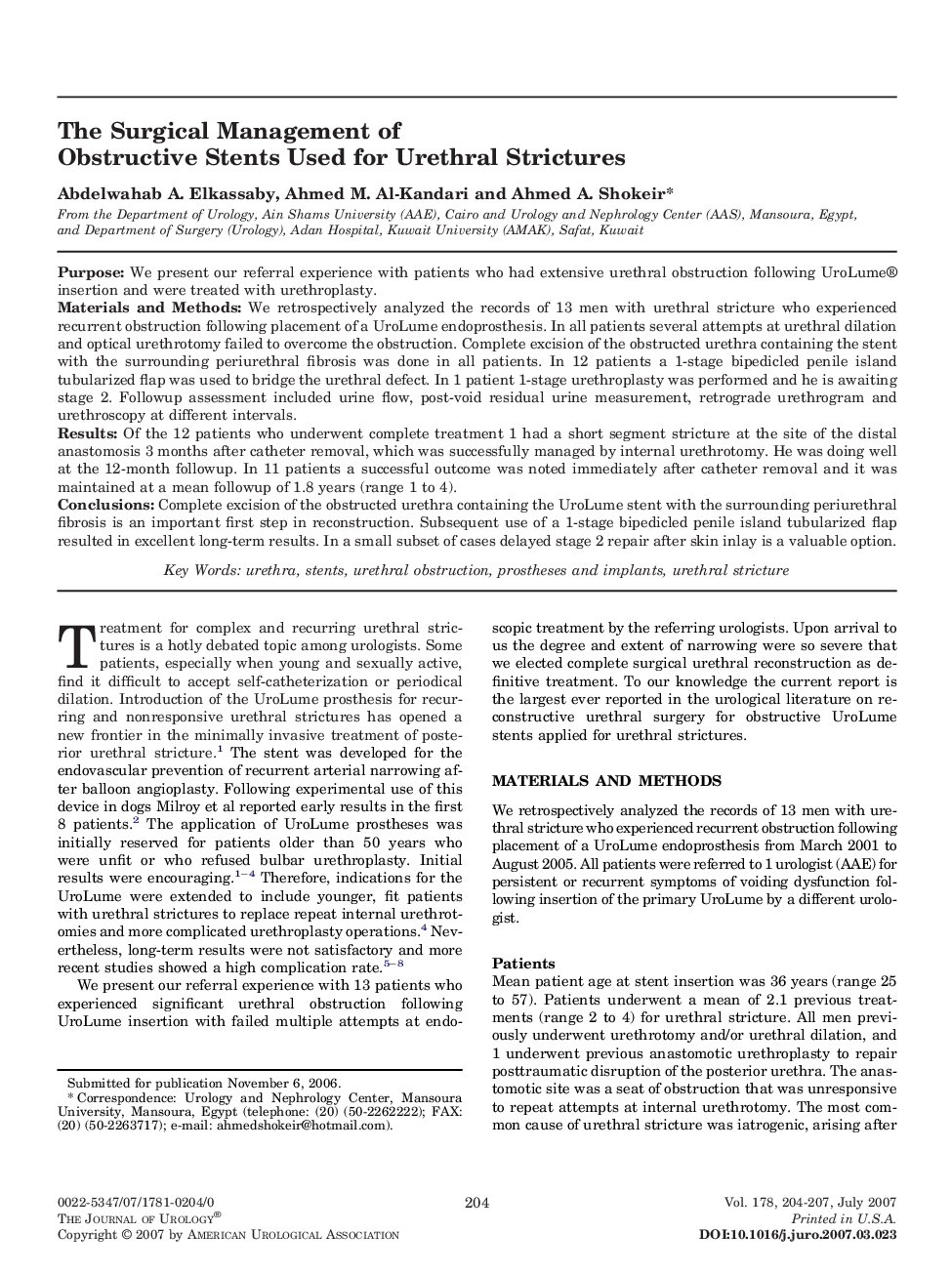| Article ID | Journal | Published Year | Pages | File Type |
|---|---|---|---|---|
| 3878534 | The Journal of Urology | 2007 | 4 Pages |
PurposeWe present our referral experience with patients who had extensive urethral obstruction following UroLume® insertion and were treated with urethroplasty.Materials and MethodsWe retrospectively analyzed the records of 13 men with urethral stricture who experienced recurrent obstruction following placement of a UroLume endoprosthesis. In all patients several attempts at urethral dilation and optical urethrotomy failed to overcome the obstruction. Complete excision of the obstructed urethra containing the stent with the surrounding periurethral fibrosis was done in all patients. In 12 patients a 1-stage bipedicled penile island tubularized flap was used to bridge the urethral defect. In 1 patient 1-stage urethroplasty was performed and he is awaiting stage 2. Followup assessment included urine flow, post-void residual urine measurement, retrograde urethrogram and urethroscopy at different intervals.ResultsOf the 12 patients who underwent complete treatment 1 had a short segment stricture at the site of the distal anastomosis 3 months after catheter removal, which was successfully managed by internal urethrotomy. He was doing well at the 12-month followup. In 11 patients a successful outcome was noted immediately after catheter removal and it was maintained at a mean followup of 1.8 years (range 1 to 4).ConclusionsComplete excision of the obstructed urethra containing the UroLume stent with the surrounding periurethral fibrosis is an important first step in reconstruction. Subsequent use of a 1-stage bipedicled penile island tubularized flap resulted in excellent long-term results. In a small subset of cases delayed stage 2 repair after skin inlay is a valuable option.
